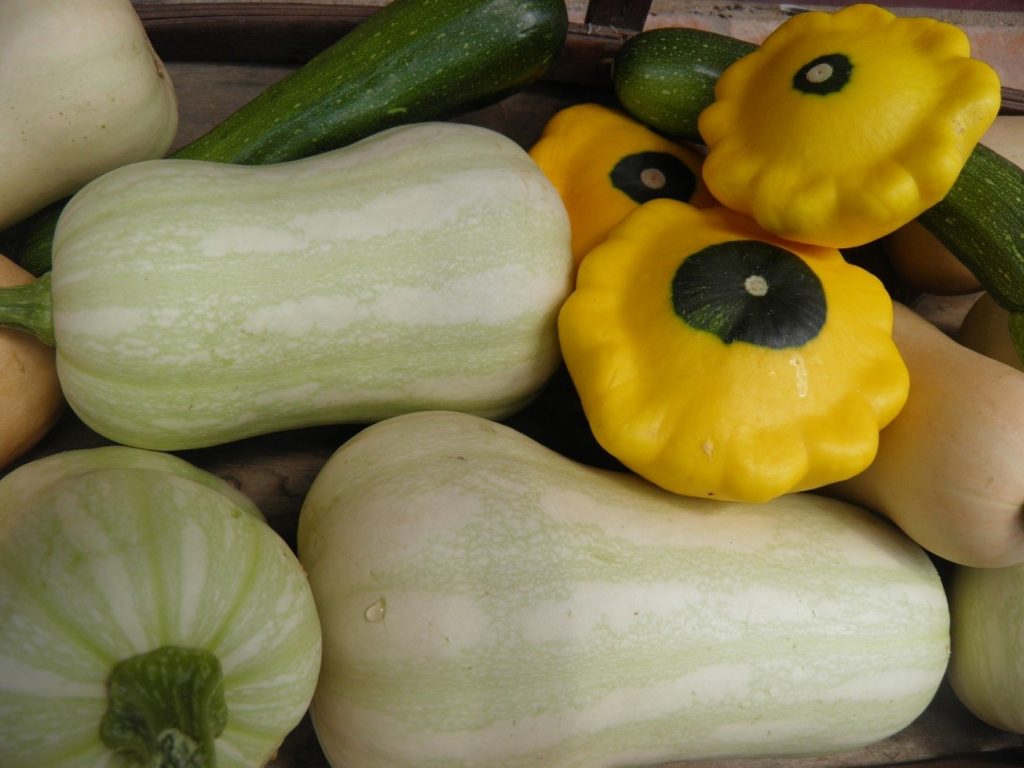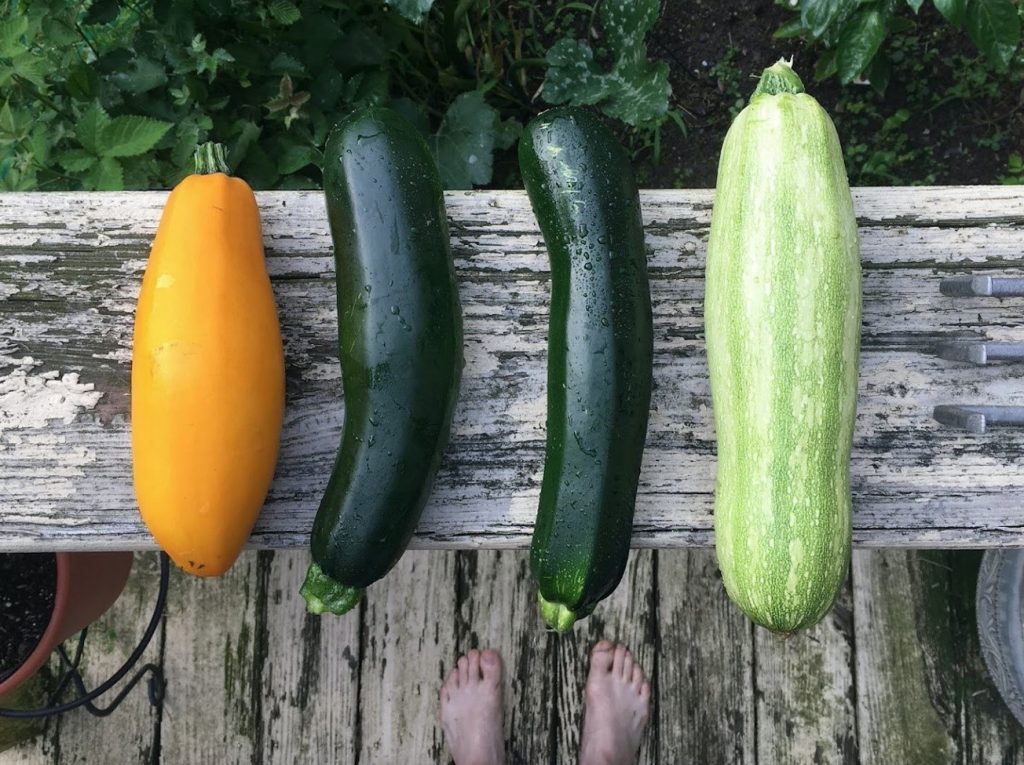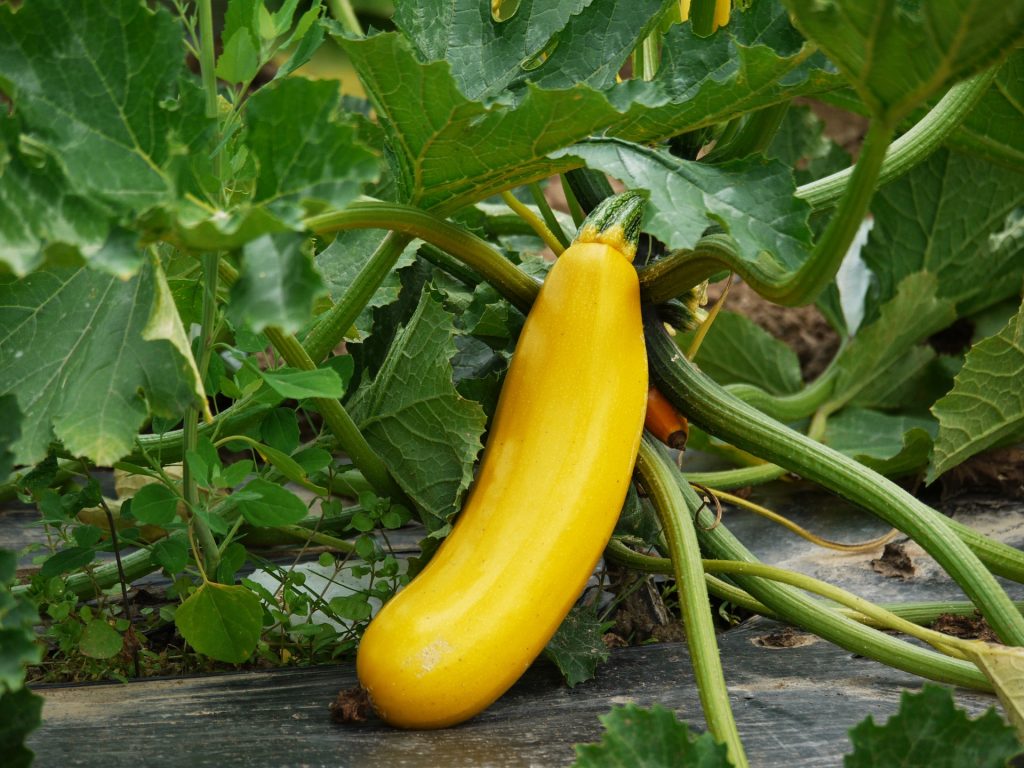Did you know?
Hard shelled squash varieties are unique to North America. The earliest natives cultivated and honored them as one of the “Three Sisters,” along with beans and corn. Many civilizations relied on the Three Sisters for sustenance as corn and beans made a complete protein and squash added beta-carotene and fiber to the diet.

Squash (Cucurbitaceae family) has been a staple of Native Americans and early European settlers for more than 5000 years. Available in many shapes, sizes, and colors, squash can be a nutritious and delicious way to add color and nutrients to the diet. While some types of squash are grown on vines and others on bushes, all can be loosely grouped into summer or winter squash types. Summer squash varieties are soft-skinned vegetables typically eaten soon after harvest. The fruit is picked off bush-type plants at an immature stage to prevent the formation of a hard rind. Winter squashes are harvested from low growing vines and eaten at the mature fruit stage.
Seasonality
A variety of summer squash is available in Colorado from August through October, whereas winter squash is typically available from August until December. Winter squash and pumpkins require a long, warm growing season and do best at elevations below 5,000 feet. Many types of winter squashes and pumpkins can be stored for use throughout the winter months. Cucumbers and summer squash require warm growing temperatures, but have a shorter growing season and shelf life than winter squash.
Selection

Choose squash with the following characteristics:
- Full sized, hard shell (winter squash)
- Heavy for their size (winter squash)
- No extensive bruising, cuts or wounds (can be an issue with soft skinned summer squash)
Handling
Summer squash is harvested when immature and may bruise or scratch easily. It can be stored in the refrigerator crisper for 3-5 days and should be kept free from moisture. Wash both winter and summer varieties under cool, running water to remove dirt and harmful bacteria before cutting. Once cut, be sure to refrigerate cut portions and discard any not used within 1-2 days.
Storage Tips for Winter Squash
Let fresh-picked winter squash sit at room temperature for 10-20 days to allow it to “cure.” Then place in a cool storage room (50-55°F), no more than two fruits deep. To avoid the potential spread of mold and rot, place fruits in a single layer if space allows. A large, hard rind winter squash can be stored for up to 6 months at 50-55°F. At room temperature, winter squash can only be stored 2-3 months.
Pickled Bread-And-Butter Zucchini
- 16 cups fresh zucchini, sliced (3/16-inch thick)
- 4 cups onion, thinly sliced
- 1/2 cup canning or pickling salt
- 4 cups white vinegar (5% acidity)
- 2 cups sugar
- 4 tablespoons mustard seed
- 2 tablespoons celery seed
- 2 teaspoons ground turmeric
Yield: About 8 to 9 pints
Cover zucchini and onion with 1 inch ice water and salt. Let stand 2 hours; drain thoroughly. Combine vinegar, sugar, mustard seed, celery seed and turmeric. Bring to a boil; add zucchini and onions. Simmer 5 minutes. Fill clean pint jars with mixture and pickling solution, leaving 1/2-inch headspace. Remove air bubbles. Wipe jar rims. Adjust lids. Process in a boiling water-bath canner for 15 minutes at 6,000 feet or less; 20 minutes above 6,000 feet.
Source: http://extension.colostate.edu/topic-areas/nutrition-food-safety-health/making-pickles-9-304/
Cutting Skills

Most recipes using hard shelled winter squash varieties call for cutting the squash in half. To cut safely, cut off a 1/4 inch from the bottom and stem end of the squash. Peel off the outer layer using a sharp vegetable peeler. Place squash upright on the cutting board and make one long cut down the middle from top to bottom. Use a small mallet or hammer to tap the knife through, if necessary.
Freezing Squash
Winter: Wash; cut into pieces and remove seeds. Cook pieces until soft in boiling water, steam, microwave oven, pressure cooker or 350-400°F oven (cut side down). Cool. Scoop out pulp; mash, blend or put through sieve. Chill thoroughly. Place into plastic containers or bags and remove as much air as possible. Store in the freezer for up to 4 months.
Summer: Select young squash with small seeds and tender rind. Wash, cut in 1/2-inch slices. Water blanch 4 minutes. Cool and drain. Place into plastic containers or bags and place in freezer for up to 4 months.
Nutrition

The nutritional properties of squash range greatly depending on the variety and maturity. Winter squash is a great source of complex carbohydrates and fiber. The flesh of orange squash, such as butternut, is high in beta-carotene which is converted to Vitamin A in the body. Vitamin A promotes good vision and helps maintain healthy skin.
Summer squash contains slightly fewer nutrients than winter squash, primarily because it is harvested at an immature stage. Many of the nutrients are in the peel. Summer varieties are high in fiber, potassium, folate, and vitamin C. Squash blossoms can also be eaten and are tasty in a variety of recipes.
Related Links
For information on preserving squash, please see our resources on Preserve Smart. For summer squash, see here. For winter squash, here.


